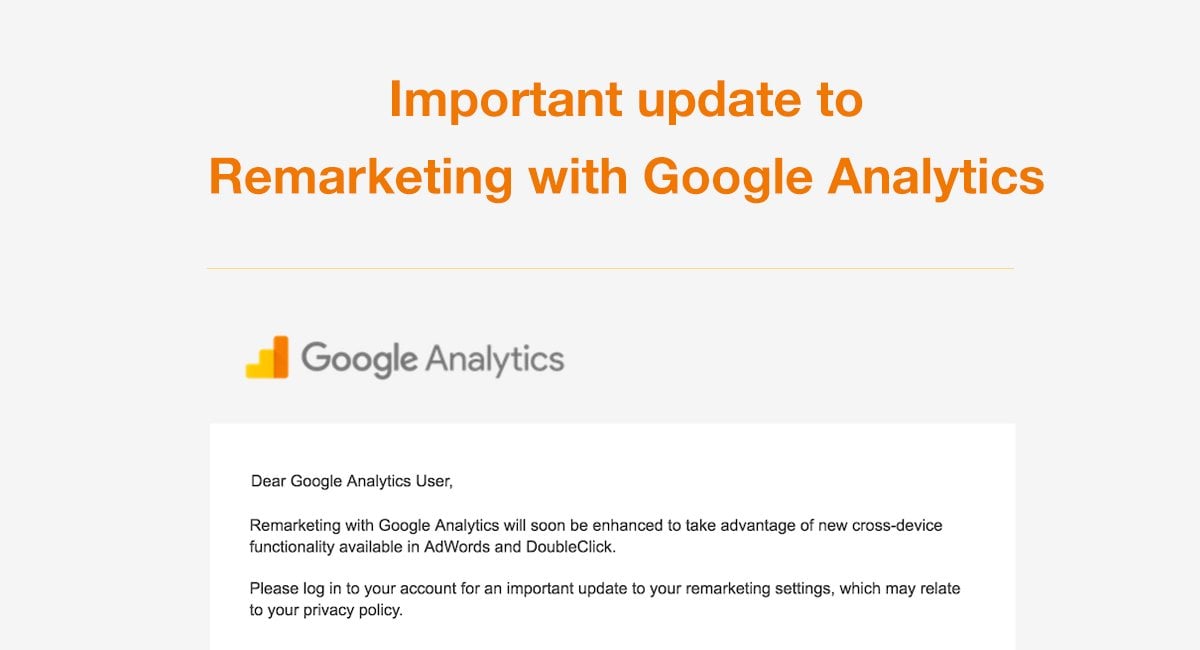Using Remarketing in Google Analytics: A Comprehensive Overview
Taking advantage of remarketing in Google Analytics supplies organizations a tactical side in getting to out to potential customers. The capacity to target people that have actually currently engaged with your internet site offers an unique chance for customized advertising and marketing efforts. By comprehending exactly how to craft target market checklists and release them effectively, services can dramatically enhance their conversion rates. However, the details of setting up and optimizing remarketing projects need a detailed understanding of target market segmentation and efficiency analysis. This overview will shed light on the necessary steps associated with using the complete potential of remarketing in Google Analytics, leading to improved advertising end results.
Comprehending Remarketing in Google Analytics
Remarketing in Google Analytics enables companies to strategically target individuals who have actually previously engaged with their website or mobile application. By leveraging information from Google Analytics, companies can develop tailored remarketing checklists based upon customer habits, such as pages checked out, actions taken, or certain goals accomplished. This effective device makes it possible for businesses to re-engage with customers that have revealed rate of interest in their services or items, inevitably boosting the likelihood of conversion.
Recognizing the various sorts of remarketing strategies is important for a successful campaign - What Is “Remarketing” In Google Analytics?. Google Analytics provides various choices, including conventional remarketing, dynamic remarketing, and remarketing lists for search ads (RLSA) Each kind serves a special objective and can be tailored to meet specific advertising and marketing goals
In addition, examining the efficiency of remarketing campaigns is necessary for maximizing results. Google Analytics supplies valuable insights into the effectiveness of various remarketing strategies, allowing services to make data-driven choices and fine-tune their targeting method. By continuously adjusting and keeping track of remarketing initiatives based on analytics information, organizations can optimize ROI and drive success in their advertising and marketing initiatives.
Establishing Remarketing Campaigns

After establishing target market lists, the following step is to link Google Analytics with Google Ads. By connecting these two systems, companies can flawlessly move audience lists from Google Analytics to Google Ads for remarketing objectives. This integration enables more precise targeting and much better project performance.
When the accounts are linked, services can develop remarketing campaigns in Google Ads utilizing the target market provides formerly specified in Google Analytics. These projects can be personalized with specific ad creatives, messaging, and bidding process strategies to efficiently re-engage with previous site visitors and drive conversions. By adhering to these steps, companies can utilize the power of remarketing to improve their a fantastic read advertising initiatives and raise ROI.
Utilizing Audience Division Methods

Predefined sections in Google Analytics permit you to rapidly analyze usual audience categories fresh users, returning customers, or customers who completed a details goal on your web site. find more information Customized sectors, on the various other hand, enable you to develop unique segments based upon specific standards that are crucial to your business purposes. Dynamic remarketing lists immediately change based on user actions, showing personalized ads to users who have actually communicated with your website specifically ways.
Studying Remarketing Efficiency Metrics
Upon assessing the efficiency of remarketing campaigns in Google Analytics, the evaluation of essential efficiency metrics offers beneficial insights right into audience involvement and conversion rates. By diving into metrics such as click-through prices (CTR), conversion prices, cost per procurement (CPA), and return on advertisement spend (ROAS), marketing professionals can evaluate the success of their remarketing initiatives. Analyzing these metrics allows marketing experts to optimize projects, improve audience targeting, and assign budgets efficiently to improve overall remarketing efficiency.
Maximizing Remarketing Approaches
When refining remarketing methods in Google Analytics, concentrating on audience division is paramount for attaining campaign success. By separating your audience right into details sections based upon their actions, demographics, or interests, you can tailor your advertisements extra efficiently per group. This targeted method increases the likelihood of engaging customers who have already revealed interest in your services or items, resulting in greater conversion prices.
An additional important aspect of maximizing remarketing methods is constantly screening and refining your projects (What Is “Remarketing” In Google Analytics?). A/B testing different ad creatives, messaging, or offers can assist you determine what reverberates best with your audience and drives one of the most conversions. By analyzing you can try here the efficiency of these examinations in Google Analytics, you can make data-driven choices to enhance your remarketing efforts even more
Moreover, leveraging dynamic remarketing can substantially improve your campaign results. This feature allows you to reveal tailored advertisements to users based on their previous communications with your web site, showcasing solutions or items they have formerly watched. By supplying customized material to individuals based on their habits and interests, dynamic remarketing can help increase involvement and drive conversions.
Final Thought
Finally, harnessing remarketing in Google Analytics is a critical technique to target users that have actually previously engaged with a website. By developing customized target market listings and utilizing audience division strategies, services can maximize remarketing campaigns for boosted conversion prices. Examining performance metrics and continuously maximizing methods are important for optimizing the efficiency of remarketing initiatives.
Google Analytics provides numerous choices, consisting of common remarketing, dynamic remarketing, and remarketing listings for search advertisements (RLSA)After setting up target market checklists, the next action is to link Google Analytics with Google Advertisements. By linking these two systems, businesses can effortlessly move audience listings from Google Analytics to Google Ads for remarketing objectives.Once the accounts are linked, organizations can create remarketing campaigns in Google Ads making use of the target market notes formerly defined in Google Analytics.When refining remarketing methods in Google Analytics, concentrating on audience segmentation is vital for attaining project success.